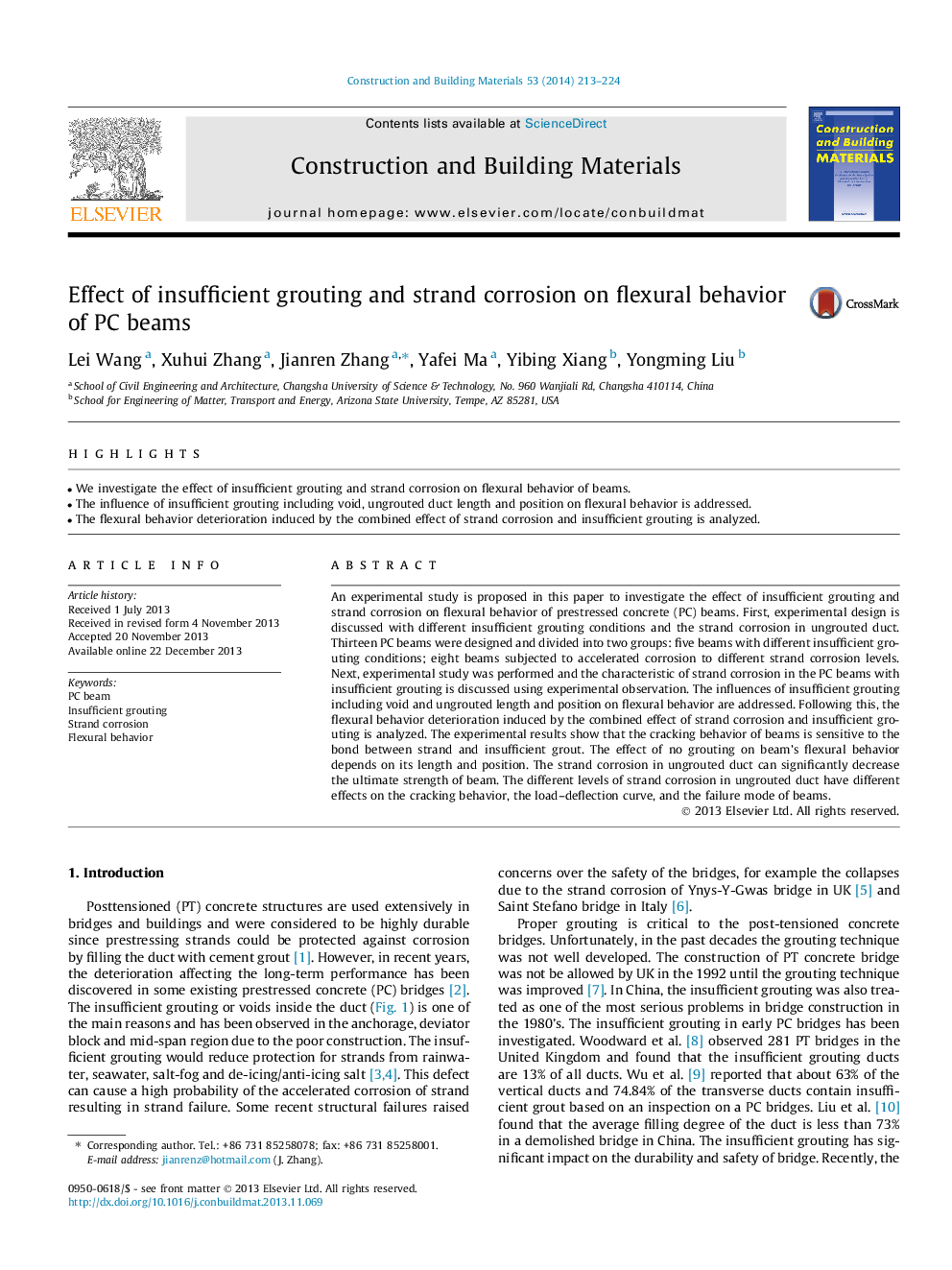| Article ID | Journal | Published Year | Pages | File Type |
|---|---|---|---|---|
| 257747 | Construction and Building Materials | 2014 | 12 Pages |
•We investigate the effect of insufficient grouting and strand corrosion on flexural behavior of beams.•The influence of insufficient grouting including void, ungrouted duct length and position on flexural behavior is addressed.•The flexural behavior deterioration induced by the combined effect of strand corrosion and insufficient grouting is analyzed.
An experimental study is proposed in this paper to investigate the effect of insufficient grouting and strand corrosion on flexural behavior of prestressed concrete (PC) beams. First, experimental design is discussed with different insufficient grouting conditions and the strand corrosion in ungrouted duct. Thirteen PC beams were designed and divided into two groups: five beams with different insufficient grouting conditions; eight beams subjected to accelerated corrosion to different strand corrosion levels. Next, experimental study was performed and the characteristic of strand corrosion in the PC beams with insufficient grouting is discussed using experimental observation. The influences of insufficient grouting including void and ungrouted length and position on flexural behavior are addressed. Following this, the flexural behavior deterioration induced by the combined effect of strand corrosion and insufficient grouting is analyzed. The experimental results show that the cracking behavior of beams is sensitive to the bond between strand and insufficient grout. The effect of no grouting on beam’s flexural behavior depends on its length and position. The strand corrosion in ungrouted duct can significantly decrease the ultimate strength of beam. The different levels of strand corrosion in ungrouted duct have different effects on the cracking behavior, the load–deflection curve, and the failure mode of beams.
